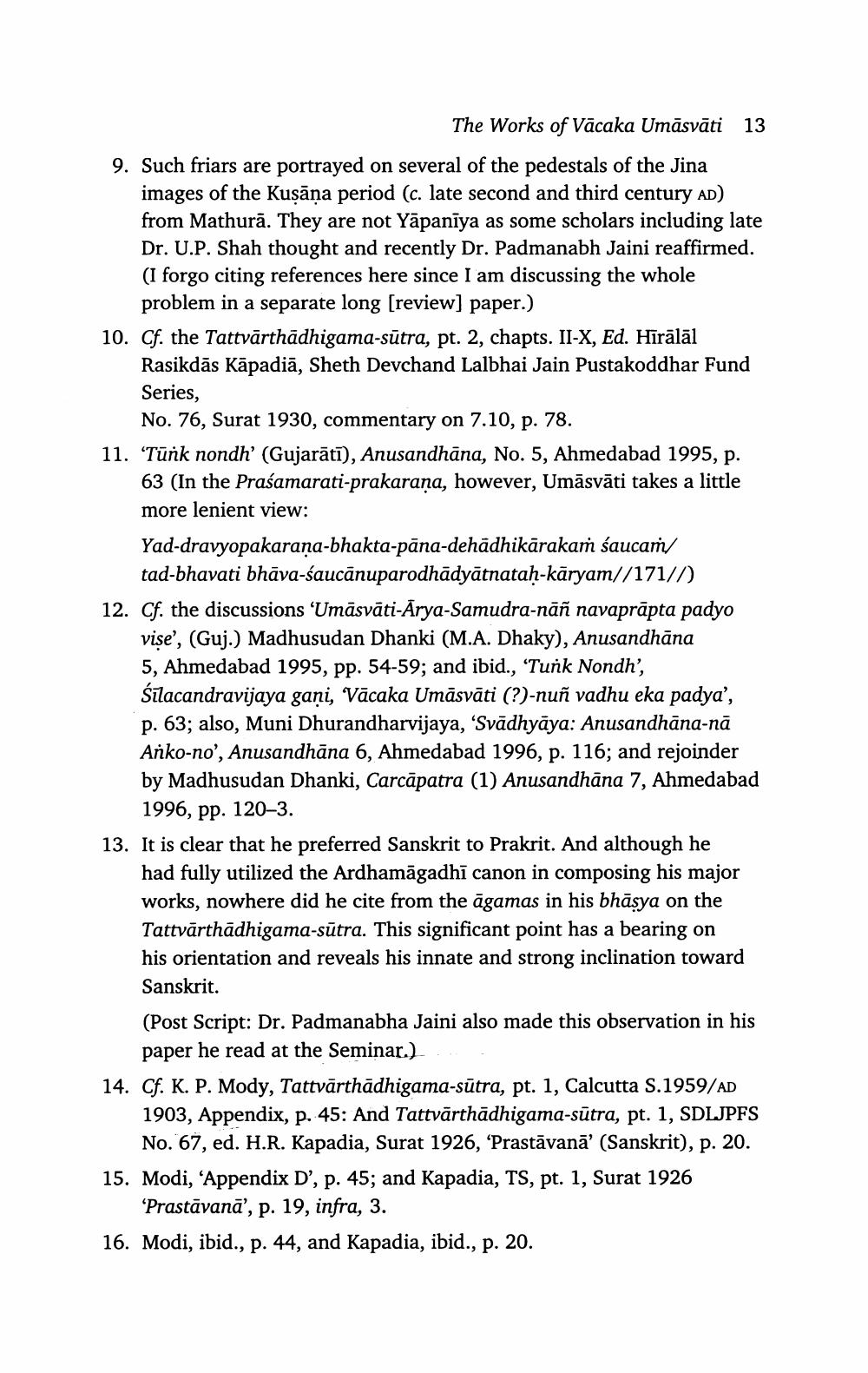________________
The Works of Vācaka Umāsvāti 13
9. Such friars are portrayed on several of the pedestals of the Jina
images of the Kuşāņa period (c. late second and third century AD) from Mathurā. They are not Yāpanīya as some scholars including late Dr. U.P. Shah thought and recently Dr. Padmanabh Jaini reaffirmed. (I forgo citing references here since I am discussing the whole
problem in a separate long [review] paper.) 10. Cf. the Tattvarthādhigama-sūtra, pt. 2, chapts. II-X, Ed. Hīrālāl
Rasikdās Kāpadiā, Sheth Devchand Lalbhai Jain Pustakoddhar Fund Series,
No. 76, Surat 1930, commentary on 7.10, p. 78. 11. 'Türk nondh' (Gujarātī), Anusandhāna, No. 5, Ahmedabad 1995, p.
63 (In the Praśamarati-prakarana, however, Umāsvāti takes a little more lenient view: Yad-dravyopakarana-bhakta-pāna-dehādhikarakaṁ saucam
tad-bhavati bhāva-saucānuparodhādyātnatah-kāryam//171//) 12. Cf. the discussions ‘Umāsvāti-Arya-Samudra-nāñ navaprāpta padyo
vise', (Guj.) Madhusudan Dhanki (M.A. Dhaky), Anusandhāna 5, Ahmedabad 1995, pp. 54-59; and ibid., 'Turk Nondh', Śīlacandravijaya gani, Vācaka Umāsvāti (?)-nuñ vadhu eka padya', p. 63; also, Muni Dhurandharvijaya, 'Svādhyāya: Anusandhāna-na Arko-no', Anusandhāna 6, Ahmedabad 1996, p. 116; and rejoinder by Madhusudan Dhanki, Carcāpatra (1) Anusandhāna 7, Ahmedabad
1996, pp. 120-3. 13. It is clear that he preferred Sanskrit to Prakrit. And although he
had fully utilized the Ardhamāgadhi canon in composing his major works, nowhere did he cite from the āgamas in his bhāsya on the Tattvārthādhigama-sūtra. This significant point has a bearing on his orientation and reveals his innate and strong inclination toward Sanskrit. (Post Script: Dr. Padmanabha Jaini also made this observation in his
paper he read at the Seminar.) 14. Cf. K. P. Mody, Tattvārthādhigama-sūtra, pt. 1, Calcutta S.1959/AD
1903, Appendix, p. 45: And Tattvārthādhigama-sūtra, pt. 1, SDLJPFS
No. 67, ed. H.R. Kapadia, Surat 1926, “Prastāvanā' (Sanskrit), p. 20. 15. Modi, 'Appendix D’, p. 45; and Kapadia, TS, pt. 1, Surat 1926
‘Prastāvanā', p. 19, infra, 3. 16. Modi, ibid., p. 44, and Kapadia, ibid., p. 20.




